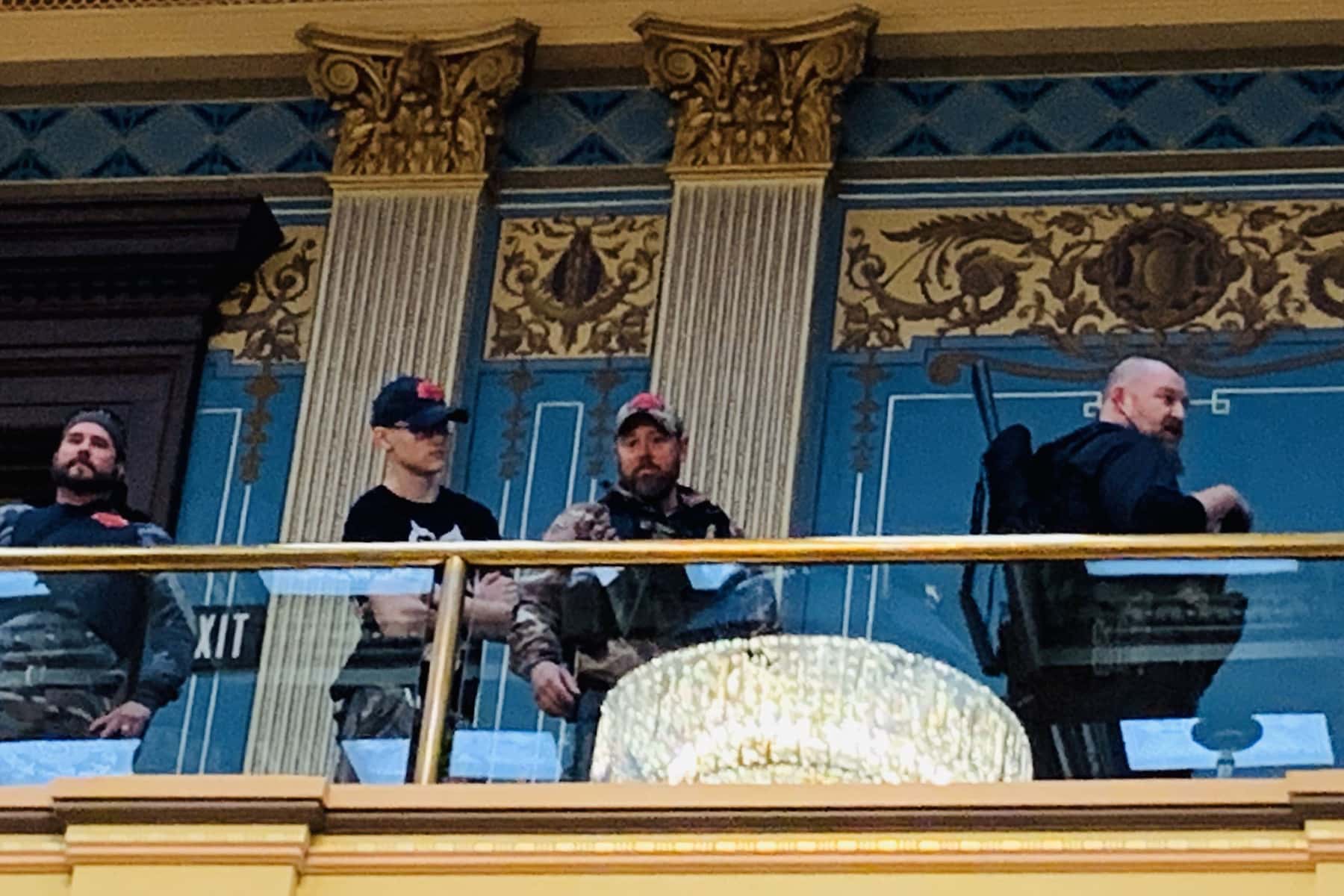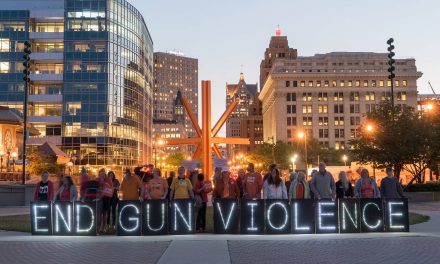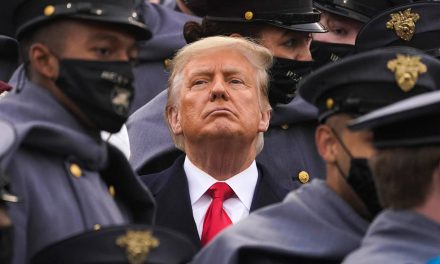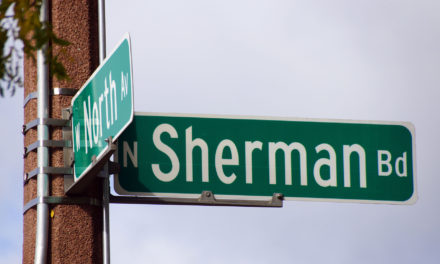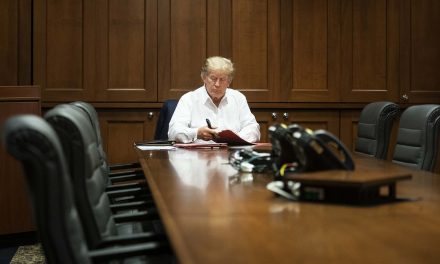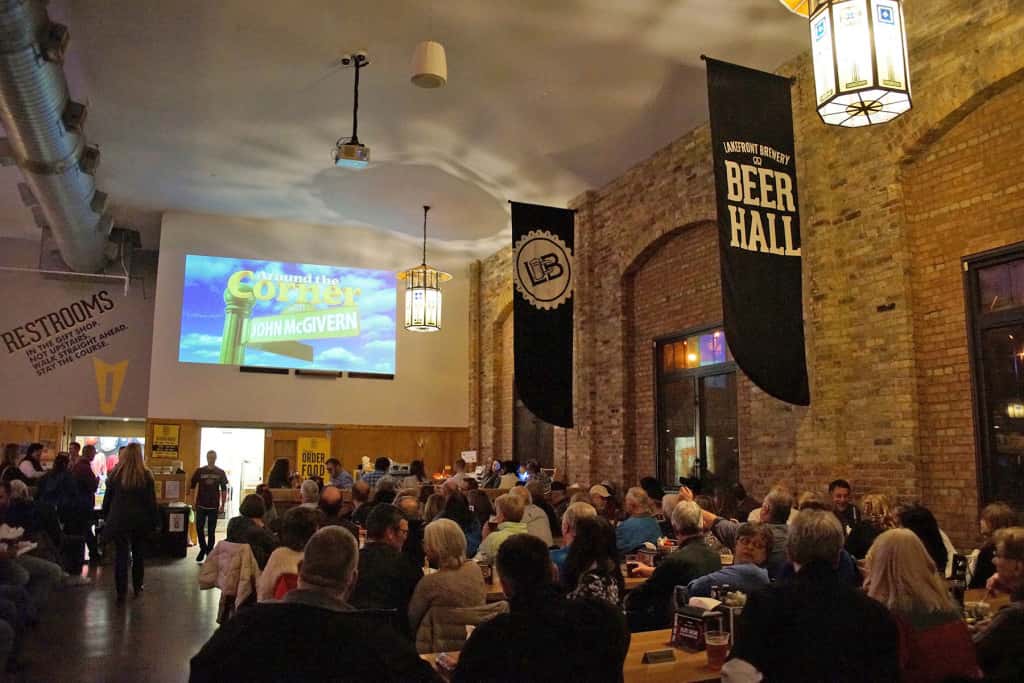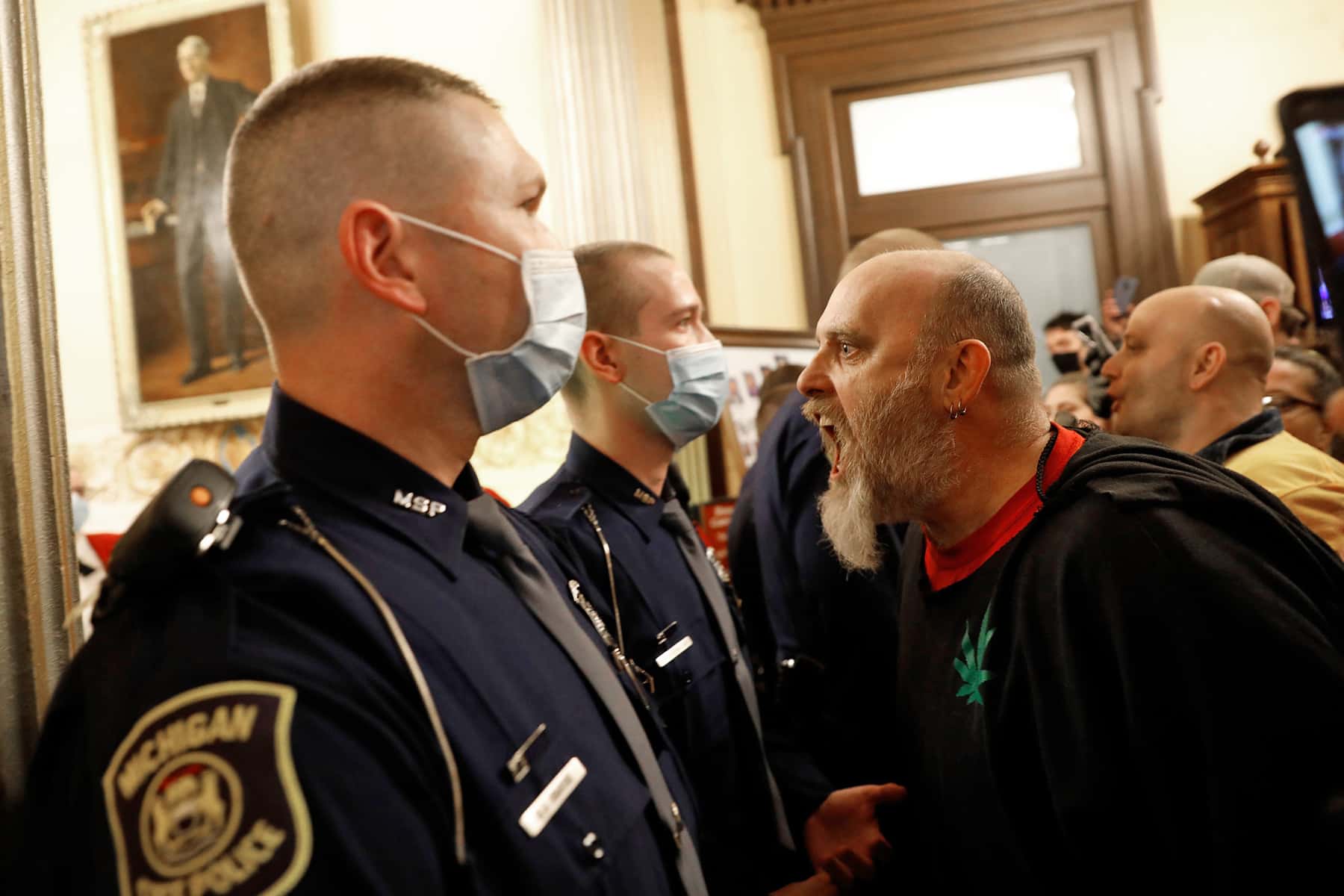
Jeff Kowalsky’s photograph of the “American Patriot Rally” at the Michigan statehouse on April 30 shows a large, bearded man, leaning forward, mouth open, screaming. Positioned between two police officers who are staring blankly ahead above their masks, he is focused on something they are preventing him from reaching: the legislature. His fury is palpable.
The idea that such a man is an “American Patriot” is the perverted outcome of a generations of political rhetoric that has celebrated a cartoon version of “individualism.” That rhetoric has served a purpose: to convince voters that an active government that regulates business, provides a basic social safety net, and promotes infrastructure—things most Americans actually like—is socialism.
Americans embraced an active government in the 1930s and 1940s to combat the Depression and fight World War Two, and by 1945, that government was hugely popular among members of both parties, but not with the businessmen who resented government interference in their industries. To get voters to turn against a system they liked, in the 1950s, leaders eager to destroy business regulation linked their mission to racism.
After the Supreme Court, headed by former Republican Governor of California Earl Warren, unanimously ruled that school segregation was unconstitutional, reactionaries determined to undercut the New Deal government told voters that this is what they had warned about all along: an activist state would redistribute white people’s money to black people through taxes, levied to do things like provide schools, or the troops necessary to protect the black youngsters trying to enroll in them.
That rhetoric resonated with certain white Americans because it echoed that of Reconstruction, when Democrats opposed to black rights insisted that Republican policies to level the playing field between formerly enslaved people and their white former owners were simply a redistribution of wealth. Money for roads and schools and hospitals that would now be accessible to black Americans would have to be paid for by tax levies. Since most property owners in the immediate aftermath of the Civil War were white, this meant a transfer of wealth from hardworking white taxpayers to lazy African Americans. As one reporter put it: socialism had come to South Carolina.
In contrast to the East, with this crushing system, stood the postwar West, where Democrats admired the cowboy. The actual work of a western cowboy in the short period of the heyday of cattle ranging from 1866 to 1886 was dangerous, low-paid, and dirty; the industry depended heavily on government supported-railroads and military support; and a third of the cowboys were men of color. But people eager to criticize the Republicans’ social welfare policies insisted that the cowboy was the true American individualist. Almost always white in this myth, he wanted nothing from government but to work hard as he tamed the land and the “savages” on it, provide for the wife and children he someday hoped to have, and be left alone. The image of the cowboy became such a dominant myth during Reconstruction that it turned Buffalo Bill’s Wild West Show into the nation’s first mass entertainment spectacle.
It was no wonder then, that in the 1950s and 1960s, those eager to destroy an active government tapped into the image of the American cowboy as their symbol. Gunsmoke debuted on the new-fangled television in 1955, and by 1959, there were 30 prime time Westerns on TV. These westerns portrayed the mythical cowboy much as he had been after the Civil War: an independent white man fighting the “savages” of the plains to provide for his eventual family. A man who wanted nothing of government but to be left alone.
Arizona Senator Barry Goldwater, with his square jaw and white Stetson, tapped into this mythology as the Republican presidential candidate in 1964. He assured white southerners that the adjustment of race relations was an unlawful assumption of power by the federal government. So, too, was business regulation. Goldwater lost the election, but turned five deep South states from the Democratic Party to the Republican Party, a pattern Ronald Reagan capitalized on in 1980. Swapping his usual English riding outfit for jeans and a western saddle, Reagan personified the mythological American cowboy. He assured Americans that “Government is not the solution to our problem, government is the problem,” then began the process of dismantling the New Deal state, slashing taxes and programs to restore to glory the American individualist.
Reagan’s election saw the first gender gap in American voting, as women hesitated to sign on to a program that was working against their ability to provide for their families. Lots of men weren’t so sure they wanted to slash workers’ protections and government regulation of business, either. So those eager to reinforce the image of the American individualist against a socialist government upped their game. In 1984, we got Red Dawn, the bloodiest movie made up to that point, featuring high school boys in the West standing against an invasion of communists after the town government sells everyone out.
In 1992, the idea of a western individualist standing against an intrusive government got a real demonstration when government forces tried to arrest a former factory worker, Randy Weaver, who had failed to show up for a trial on a firearms charge, at Ruby Ridge, Idaho. An 11-day siege killed Weaver’s wife, fourteen-year-old son, and a deputy marshal. Far-right activists and neo-Nazis swarmed to Ruby Ridge to stop what they saw as the overreach of government as it attacked a man protecting his family.
The next year, government officers stormed the compound of a religious cult whose former members reported that their leader, David Koresh, was stockpiling weapons. A 51-day siege ended on April 19, 1993, in a gun battle and a fire that killed 76 people. Talk radio host Rush Limbaugh told his listeners that the government had invaded Waco to “murder” a citizen. The modern militia movement to protect individuals from government tyranny took off.
Now, having sown the wind, we are reaping the whirlwind. Anti-government cowboys are protesting the tyranny of government measures designed to protect citizens from dying. The right of governors and legislatures to protect health is well-established, of course, but that doesn’t matter to men steeped in the rhetoric of the past generation.
This now-famous image of the screaming “American Patriot” is a portrait of the failure of the individualist image. This is a man who punches down, not up, and who wants to have the power to decide whether his neighbors live or die. He is a bully and a coward.
You know who’s brave? The doctors and nurses who get up every morning and go to their jobs. The bus drivers who have continued to work without either hazard pay or sufficient protection, at least 94 of whom we have lost to Covid-19. The janitors and housekeeping staff who combat the virus all day, every day. The meat cutters and fishermen, shippers, drivers and store clerks who are keeping us alive, some only because it is the only way they can feed their children, which makes it all the braver. The Navy sailors trying to contain the virus so they can complete their mission. The teachers who stay upbeat for the students they terribly miss. The parents who are so very tired as they try to work and teach and parent and shop, but who get up every morning and do it again. And, yes, the political leaders trying to legislate to protect us as a handful of screaming anti-government activists terrorize them… and the photographers who record it.
These true American Patriots – not a screaming bully whose “rights” require others to die– are the very good people Abraham Lincoln meant when he called for a government “of the people, by the people, for the people.”
Jeff Kowalsky and Senator Dayna Polehanki
Letters from an Аmerican is a daily email newsletter written by Heather Cox Richardson, about the history behind today’s politics

